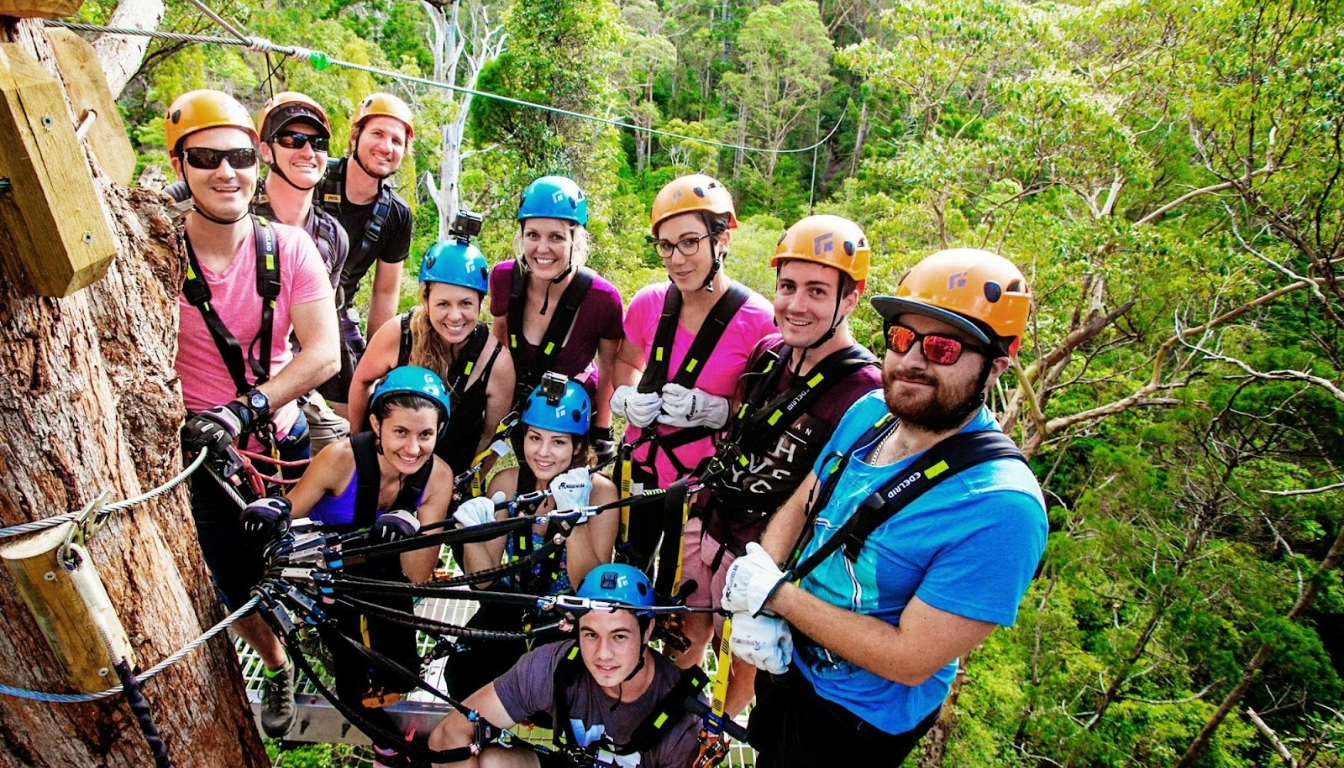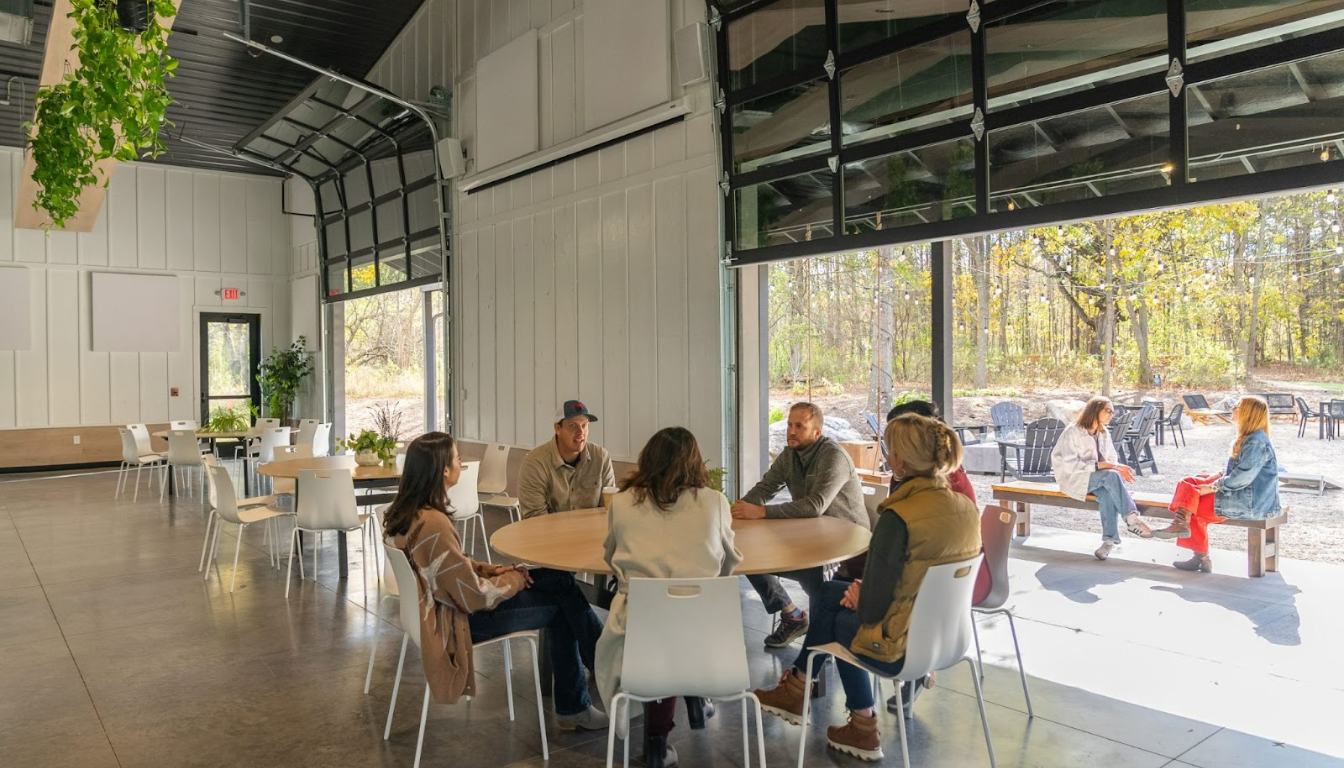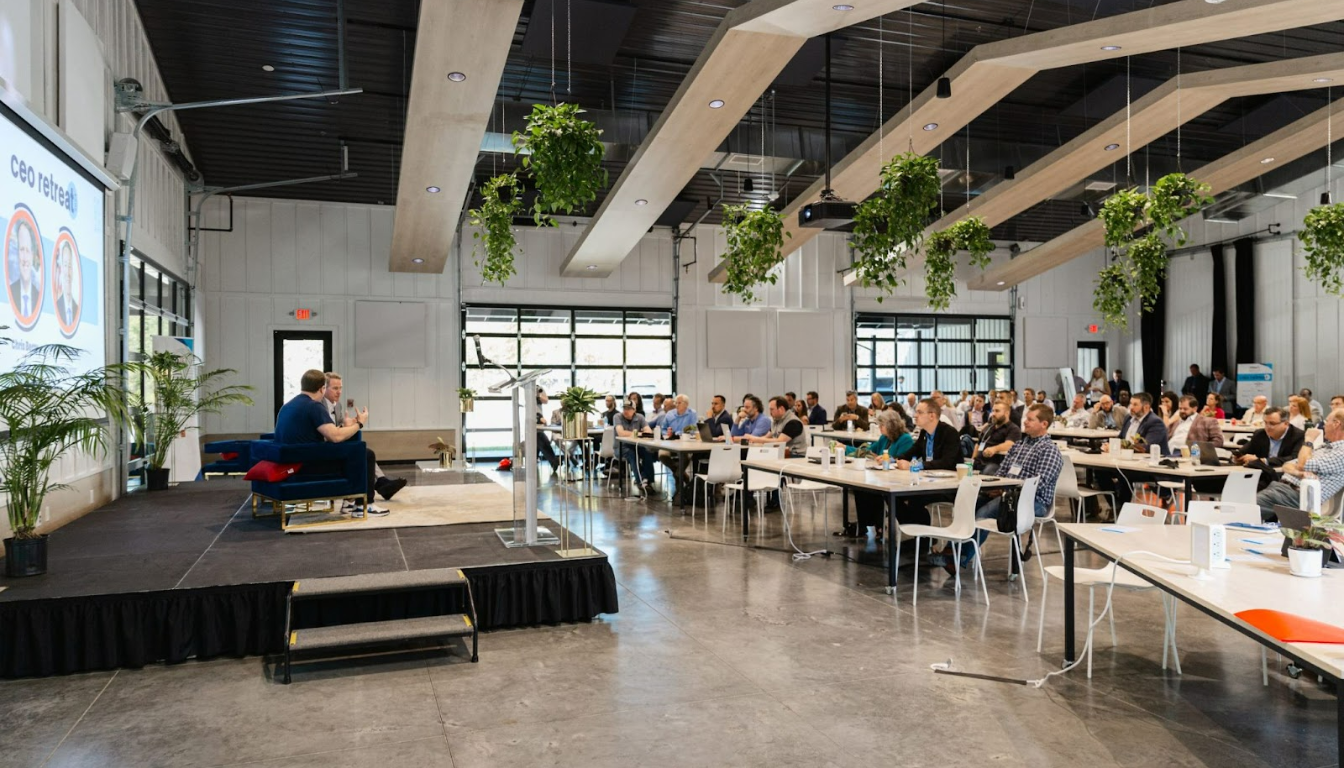Top Tips for Effective Corporate Retreat Planning

Organizing a corporate retreat doesn’t have to be overwhelming. Our guide on corporate retreat planning covers key steps like setting clear goals, choosing the right location, crafting a balanced agenda, and planning engaging activities.
Key Takeaways
- Successful corporate retreats require a clear understanding of their objectives to ensure aligned activities and productive outcomes.
- Incorporating engaging activities, both work-related and recreational, is crucial for team bonding and enhancing overall employee morale during retreats.
- Effective communication and inclusivity are essential for participant engagement, requiring advance discussions on preferences and post-retreat feedback for continual improvement.
Understanding the Purpose of a Corporate Retreat

The foundation of a successful corporate retreat lies in understanding its purpose. Corporate retreats aim to support employees, strengthen relationships, and boost productivity while refreshing morale. These retreats are designed to facilitate team bonding, foster creativity, and tackle company challenges in a collaborative environment. In today’s remote or hybrid work settings, such in-person retreats are crucial for combating feelings of isolation and motivating employees.
Beyond team bonding, corporate retreats serve as a platform for collaboration and problem solving. They provide a unique setting where colleagues can connect on a deeper level, share ideas freely, and work together to overcome obstacles during a team retreat, fostering a strong company culture.
Clear goals are essential as they guide the design and planning of the retreat, ensuring that every activity is aligned with the overall objectives. Establishing these objectives upfront simplifies the decision-making process and sets the stage for a successful retreat.
Setting Clear Goals
Defining a clear goal is the first and most crucial step in planning a company retreat. A well-defined purpose aligns all activities and ensures productive outcomes. For instance, if the goal is to enhance team bonding, the company retreat agenda should include activities that promote interaction and trust-building among team members. Similarly, if the focus is on innovation, workshops and brainstorming sessions should be prioritized.
A clear objective simplifies the entire retreat planning. Preliminary decisions, such as defining objectives and narrowing preferences, become easier when you know what you aim to achieve. If the purpose is not yet defined, gather input from team members to decide if the retreat meets everyone’s expectations.
Setting clear expectations and creating an intentional agenda are particularly important when planning for remote employees.
Benefits of Corporate Retreats
Corporate retreats offer many benefits that go beyond a temporary break from the office. They help build empathy and stronger bonds among colleagues, enhancing overall team dynamics. Sharing laughs and celebrating successes during company retreats fosters a better understanding of each other, which translates into a more cohesive work environment and a significant benefit, creating a retreat feeling.
A well-planned company retreat can lead to problem-solving, innovation, learning, and boosted productivity. The fresh environment encourages new perspectives that can drive productivity. Participating in retreats also promotes creativity and collaboration, making it a fantastic opportunity for team members to learn and grow together during the next company retreat.
Moreover, creating an inclusive retreat enhances team cohesion and fosters improved creativity and innovation. Workshops tailored to enhance team skills, such as leadership and problem-solving, can be incorporated into the company retreat agenda. Fun activities, such as team building games, allow employees to engage in stress-relieving experiences that enhance morale and overall employee engagement.
Key Steps in the Retreat Planning Process

Planning a corporate retreat involves several key steps to ensure all critical details are covered:
- Start the retreat planning process 6 months to a year in advance to address all aspects.
- The People Operations team usually takes the lead.
- A designated planning owner guides the entire process.
There are eight essential steps to follow when planning a corporate retreat. These include:
- Defining objectives
- Setting a budget
- Selecting a location
- Crafting a balanced agenda
- Choosing the right venue
- Planning engaging activities
- Ensuring effective communication and inclusivity
- Following up post-retreat
Consider working with a professional event planner to help with logistics, destination selection, and start planning the itinerary for the event's retreat.
Each of these steps plays a pivotal role in creating an incredible retreat experience. From the initial planning stages to the final follow-up, every detail matters. A proactive and methodical approach ensures that your next corporate retreat is both enjoyable and highly productive.
Building a Realistic Budget
Building a realistic budget is a critical component of retreat planning. The budget should include all relevant expenses, such as travel and event planning fees, food and beverage minimums, and onsite meeting space fees. Companies should also cover transfers, meals, and activities for all employees to ensure a seamless experience.
Determine the overall retreat cost by estimating spending per team member and accounting for all expenses. Professional planners often have access to exclusive discounts and package deals, leading to better budgeting.
Leveraging these resources allows for more effective budget allocation, ensuring every aspect of the retreat is covered without overspending.
Selecting an Ideal Location
Selecting an ideal location is paramount to the success of a corporate retreat. Accessibility is a key factor; choosing a location not too far from the city helps make it convenient for attendees to reach the venue without extensive travel. Elements such as nature, waterside views, luxury, historical significance, or uniqueness can enhance the appeal of the retreat location.
Regions like Portugal, Spain, and Eastern Europe are recommended for hosting a corporate retreat due to their appealing features in the world. An urban setting can be advantageous for business retreats focused on work, offering quick access to off-site activities during downtime in different locations.
On the other hand, choosing a house can provide a more homely atmosphere and encourage greater team bonding compared to hotels.
Crafting a Balanced Agenda
Crafting a balanced agenda is essential for maintaining participant engagement and satisfaction during the retreat. A structured agenda helps hold everyone accountable and ensures a balanced schedule of work, activities, and free time. Including both structured activities and leisure time in the agenda enhances participant engagement and satisfaction.
Casual social activities such as s’mores night, cocktail hours, casual pizza dinners, and game night can enhance team bonding and provide relaxation, strengthening relationships.
Planning ahead and creating a detailed itinerary ensures the next retreat runs smoothly and provides an enjoyable, productive experience for all participants. To create an idea for a plan ahead is essential for success.
Choosing the Right Venue
Choosing the right venue is a crucial step in the retreat planning process. Recommended venues for hosting a corporate retreat include hotels, rental properties, casinos, craft spaces, art studios, dinner cruises, and tropical resorts. When selecting a venue, consider factors such as the unique experience, the fun environment, and the suitability for the group size.
A venue should provide comfortable work seating, WiFi, and meeting rooms to facilitate productive work sessions during the retreat. Thoughtful venue selection sets the tone for the entire retreat and can significantly enhance engagement and effectiveness, especially when goals are met. Meetings can also play a crucial role in this process.
Venue Sourcing Tips
When sourcing a venue, consider the following:
- Options that offer flexible spaces for varied activities to maximize engagement.
- Creative venues like art galleries or outdoor spaces, which can provide a more memorable experience compared to traditional hotel settings.
- Utilizing platforms that allow comparison of various venue types to simplify the venue sourcing process.
Ensure the chosen venue balances quality with cost to achieve the best value for your retreat. Selecting the right venue is crucial for ensuring your corporate retreat meets its specific objectives.
Comparing House vs. Hotel Options
When deciding between booking a house or a hotel for the retreat, consider the size of your group and the level of exclusivity you desire. Booking an entire hotel, neighborhood of villas, or a whole estate can foster easier introductions among unfamiliar colleagues and transform the vibe and feel of the company retreat.
Hotels and resorts are preferred for larger groups and often offer essential amenities that cater to group needs.
Planning Engaging Activities

Planning engaging activities is vital to the success of a corporate retreat. Team-building activities serve to build teamwork and promote unity among employees. These activities help employees get to know each other better and forge stronger relationships. Consider incorporating a variety of activity styles, including:
- Icebreakers
- Scavenger hunts
- Hiking
- Beach days
- Skiing
- Board games
- Mixology classes
It’s important to ensure that the activities cater to diverse interests and physical abilities. For participants with varying physical needs, plan shorter guided loops for any strenuous activities to ensure everyone can participate. Creating opportunities for small group interactions can also help less vocal team members feel more comfortable participating.
Physical Activities
Selecting physical activities is crucial for promoting teamwork and enhancing the overall retreat experience. Outdoor adventures like scavenger hunt or hiking can be excellent choices to encourage both physical activity and teamwork. Understanding the fitness levels and preferences of participants ensures that the activities are enjoyable for everyone.
Incorporating physical activities enhances team bonding and revitalizes participants, contributing to a successful corporate retreat. These activities provide a refreshing break from the usual work environment and allow team members to connect in a more relaxed setting.
Creative Workshops
Creative workshops offer a fantastic opportunity to foster teamwork and creativity during a company retreat. Examples of interactive workshops include cooking classes and wine tasting, which promote teamwork and creativity. Workshop topics should be beneficial for team learning, enhancing the effectiveness of collaborative efforts.
Catering options for workshops can include:
- Self-serve food options
- Large catered meals
- Cooking classes
- Private chefs
These workshops not only provide a break from the usual work environment but also allow team members to learn new skills in breakout rooms and build camaraderie among remote teams.
Relaxation and Free Time
Including downtime in the schedule makes the event low-stress and allows team members to recharge. Unstructured time in the itinerary enables informal connections, fostering stronger relationships.
Creating shared memories and enjoying the destination should be a primary focus of the retreat, complemented by fun activities. Scheduling downtime for spending time not only refreshes participants but also enhances the overall unforgettable experiences of the retreat.
Effective Communication and Inclusivity
Effective communication and inclusivity are vital for ensuring that all participants feel comfortable and engaged during the retreat. Flexibility and inclusivity for all participants should be considered when planning activities for a corporate retreat. Successful remote team retreats require experience and understanding of team dynamics, along with a focus on inclusivity.
Polling attendees about desired games and activities is crucial instead of assuming what employees will enjoy doing during the retreat, as not everyone may have the same preferences. Clear communication about retreat details helps in setting expectations and preparing participants, reducing anxiety.
Advance Communication
Advance communication is crucial for corporate retreats as it reduces anxiety, sets clear expectations, and prepares participants. Clear communication about expenses and potential costs should occur early to avoid misunderstandings. Team members must be informed in advance about any physical activity limitations and accessibility issues to ensure everyone is on the same page.
Gathering team surveys pre-retreat helps gauge comfort levels and preferences for communication regarding retreat details. Using a Q&A session allows team members to ask questions and clarify doubts about the retreat beforehand. Sharing information about the retreat widely through a company-wide Wiki ensures all team members have access to the necessary details.
Ensuring Inclusivity
Inclusivity is vital in planning a corporate retreat to ensure all team members participate and enjoy the experience. Ways to promote inclusivity include:
- Involving the team in planning decisions to ensure the retreat meets employees’ expectations.
- Allowing remote team members to join through videoconferencing.
- Including virtual activities like scavenger hunts for remote participation.
To ensure inclusivity:
- Send gift cards for meals or activities to include remote participants.
- Use gender-neutral language in communications to foster an inclusive environment.
- Offer opt-in activity tracks with options that are high-energy, low-key, accessible, and virtual.
Conducting a survey to assess the entire team interests can help determine popular activities to explore for the retreat.
Post-Retreat Follow-Up

Following up after a retreat is crucial to reinforce the key messages and achievements made during the event. Important follow-up actions include:
- Gathering anonymous feedback from participants to identify areas for improving inclusivity in future retreats.
- Using feedback to gain insights into participants’ experiences and help shape future retreat planning.
- Implementing action points based on feedback to ensure continuous improvement for future retreats.
By following up effectively, you can ensure that the positive outcomes of the retreat are sustained and that any areas for improvement are addressed. This continuous loop of feedback and action helps in creating better retreats year after year.
Gathering Feedback
The purpose of a post-retreat survey is to gather feedback on employee enjoyment and improve future retreats. To gather feedback, consider the following steps:
- Send out a short anonymous survey to attendees after the retreat.
- Ensure the feedback is honest by making the survey anonymous.
- Utilize various question types in post-retreat surveys to keep attendees engaged and improve the quality of feedback.
Feedback from attendees can reveal valuable insights that inform the planning of future retreats. Leadership should consider concerns and suggestions from the post-retreat survey for future planning. This process helps in continuously improving the retreat experience for all team members.
Implementing Action Points
It is vital to establish specific action points at the end of the retreat to drive future initiatives. Clearly outline who is responsible for implementing the action points to ensure accountability. Documenting action points from the retreat helps in tracking progress and accountability within the team.
Following up on action points ensures that the objectives set during the retreat are actively pursued.
Leveraging Professional Help

Leveraging professional help can significantly ease the retreat planning process. Benefits of hiring professional event planners include:
- Providing strategic insights by aligning event goals with audience expectations
- Alleviating the stress of managing logistics and details during a retreat
- Enhancing the overall experience by ensuring every detail of the retreat is expertly managed
Offsite simplifies corporate retreat planning by managing every detail, including venues, activities, logistics, and facilitation. They offer end-to-end services at a flat, per-person rate, ensuring cost transparency and exclusive discounts. Partnering with Offsite saves time, reduces costs, and ensures a seamless retreat experience for all participants.
Benefits of Expert Guidance
Expert planners streamline the planning process by:
- Managing everything from venue selection to on-site coordination
- Handling complex logistics and vendor relationships to ease the planning burden
- Ensuring that every aspect of the retreat is efficiently managed with clear plans
Offsite provides expert guidance and planning support at no additional cost, enhancing the overall planning experience.
By leveraging expert guidance, you can focus on enjoying the retreat and fostering team connections rather than worrying about logistical details. This helps in creating a more enjoyable and productive retreat experience for everyone involved.
Cost-Effective Solutions
Offsite offers the following benefits regarding cost and pricing:
- A flat fee structure with no hidden costs, ensuring cost transparency for clients.
- A clear estimate based on set preferences, helping to accurately budget for the event.
- Savings of up to 50% on curated venues, making it a cost-effective option for retreats.
Contracts can be secured through Offsite in just a week, streamlining the planning process.
Summary
Planning an effective corporate retreat requires meticulous attention to detail and a clear understanding of its purpose. By setting clear goals, building a realistic budget, selecting an ideal location, crafting a balanced agenda, choosing the right venue, planning engaging activities, ensuring effective communication and inclusivity, and following up post-retreat, you can create an unforgettable experience for your team.
Leveraging professional help, such as the services provided by Offsite, can further enhance the planning process, ensuring cost-effectiveness and expert management of all details. With these tips and strategies, you are well on your way to planning a successful corporate retreat that will leave your team refreshed, motivated, and ready to take on new challenges.
FAQs
- What are the key benefits of corporate retreats?
Corporate retreats significantly strengthen team bonds, enhance creativity, boost productivity, and elevate morale, creating an ideal environment for collaboration and effective problem-solving. Prioritizing these retreats can lead to a more cohesive and motivated workforce.
- How far in advance should we start planning a corporate retreat?
Planning a corporate retreat should ideally commence 6 months to a year in advance to ensure all details are thoroughly addressed. This timeframe allows for comprehensive preparation and optimization of the event's success.
- What should be included in the retreat budget?
A comprehensive retreat budget should encompass travel and event planning fees, food and beverage costs, onsite meeting space charges, transfers, meals, and any activities for participants. This ensures all essential expenses are accounted for, leading to a successful event.
- How can we ensure inclusivity during the retreat?
To ensure inclusivity during the retreat, engage the team in the planning process, use gender-neutral language, offer a variety of activities, and provide opt-in tracks for participation. This approach fosters a welcoming environment for everyone.
You may also like
Unique spaces for your next offsite
Find distinctive venues for your upcoming corporate retreat.
Stay Updated with Our Insights
Get exclusive content and valuable updates directly to you.







